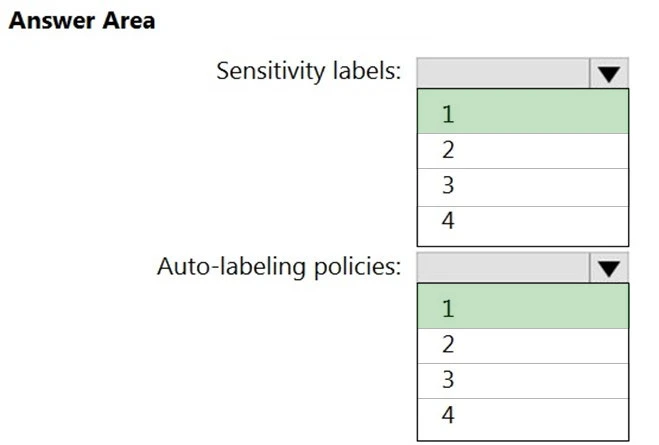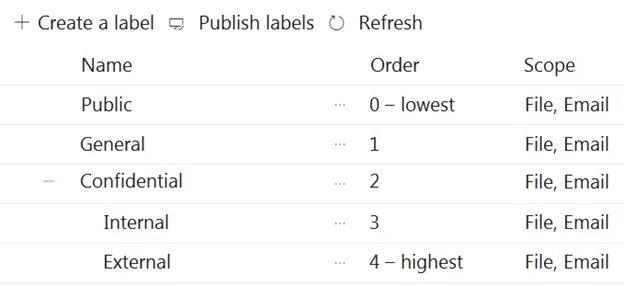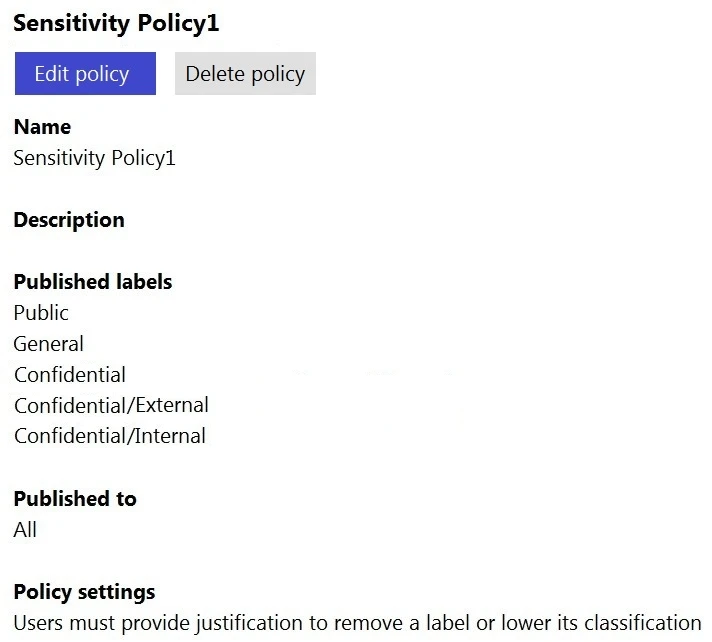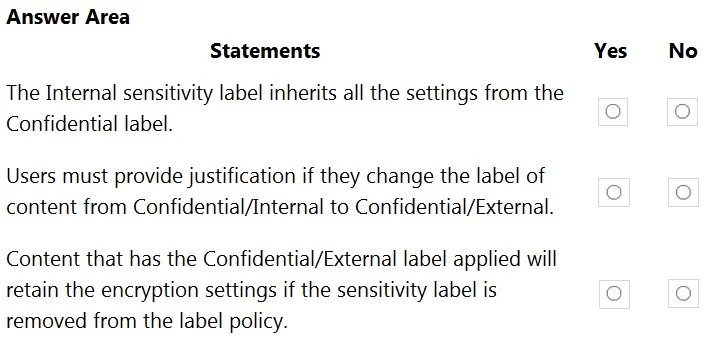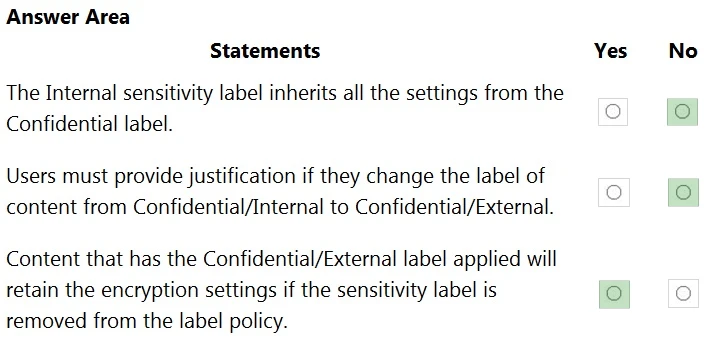You need to implement an information compliance policy to meet the following requirements:
✑ Documents that contain passport numbers from the United States, Germany, Australia, and Japan must be identified automatically.
✑ When a user attempts to send an email or an attachment that contains a passport number, the user must receive a tooltip in Microsoft Outlook.
✑ Users must be blocked from using Microsoft SharePoint Online or OneDrive for Business to share a document that contains a passport number.
What is the minimum number of sensitivity labels and auto-labeling policies you should create? To answer, select the appropriate options in the answer area.
NOTE: Each correct selection is worth one point.
Hot Area:

